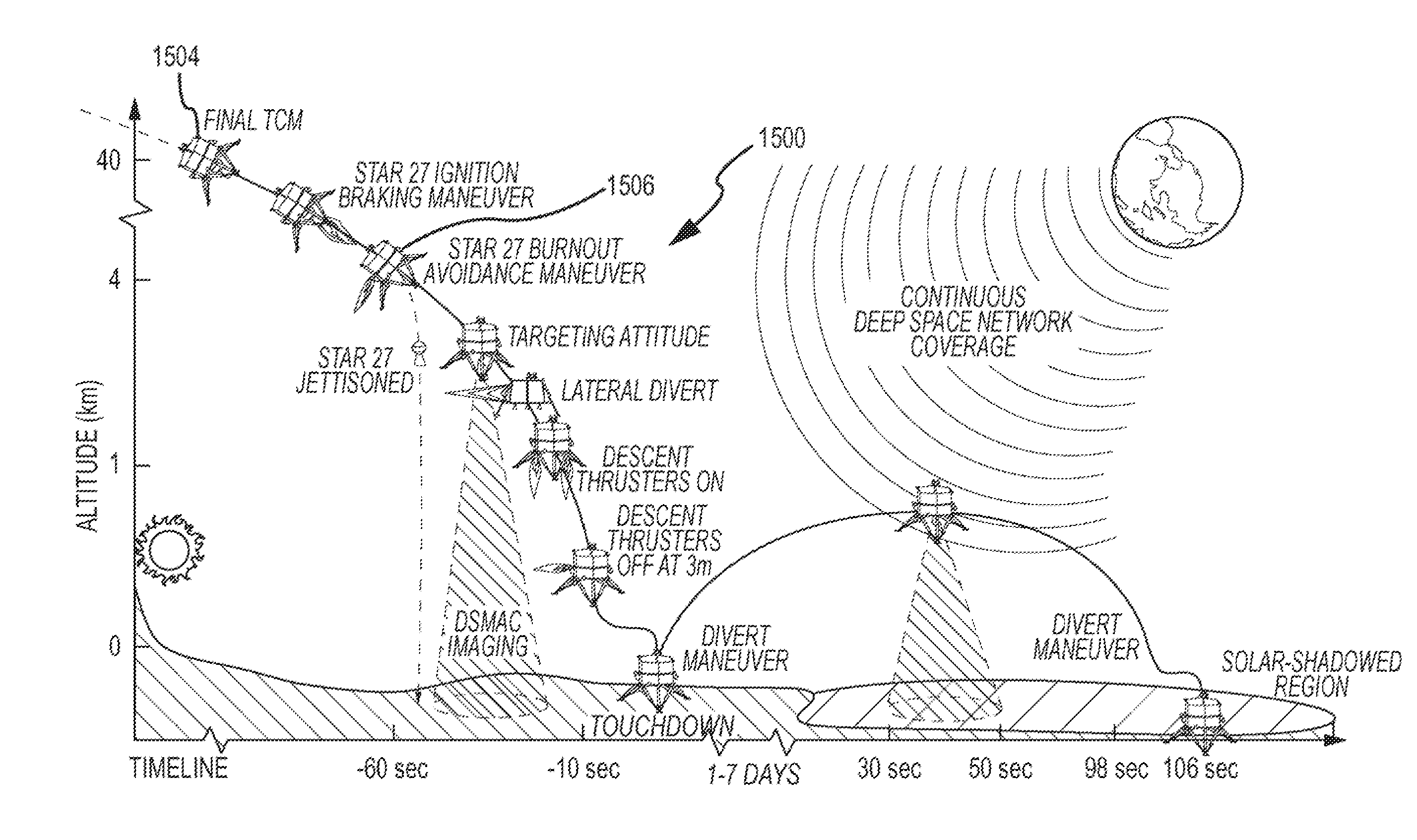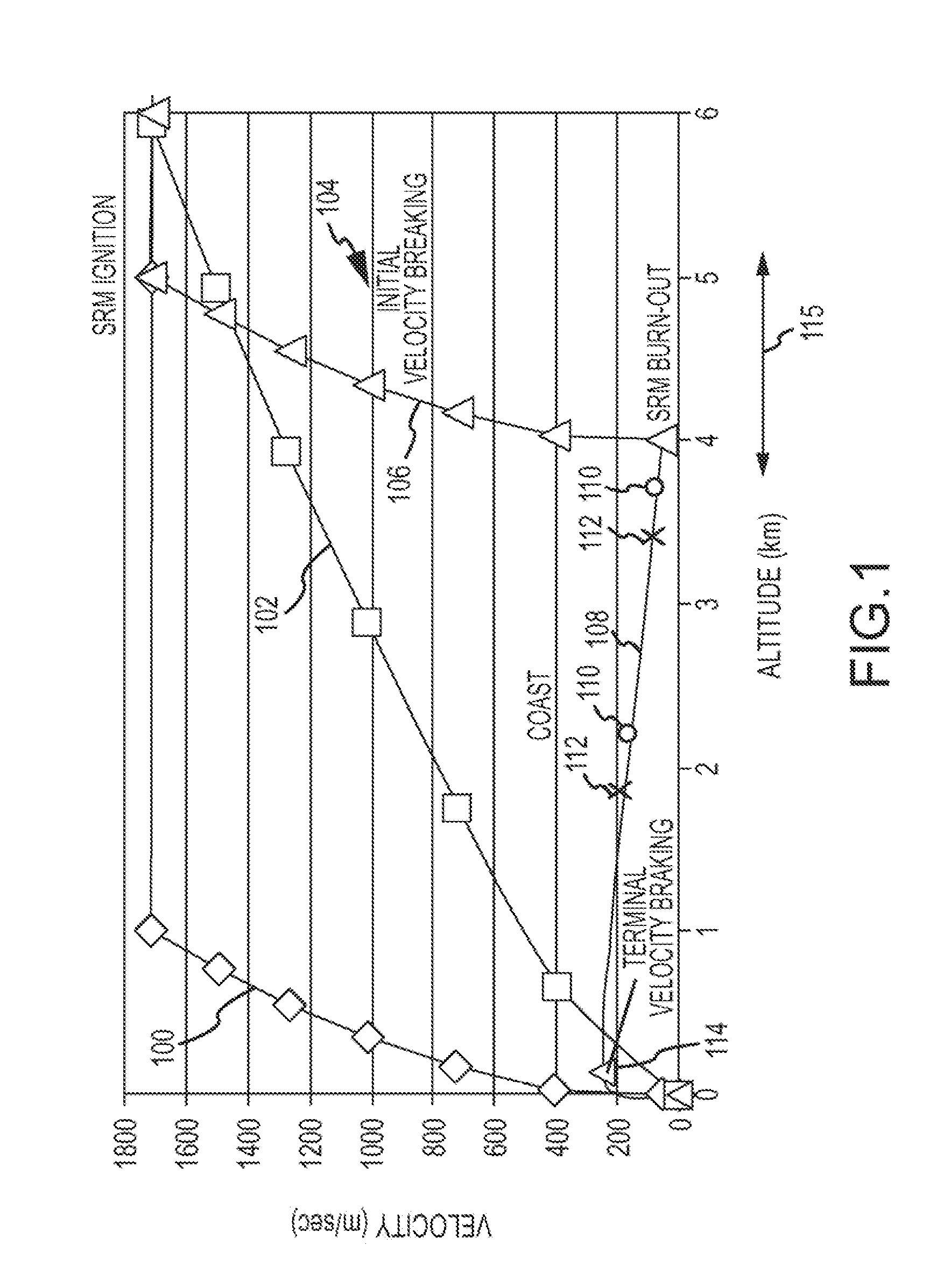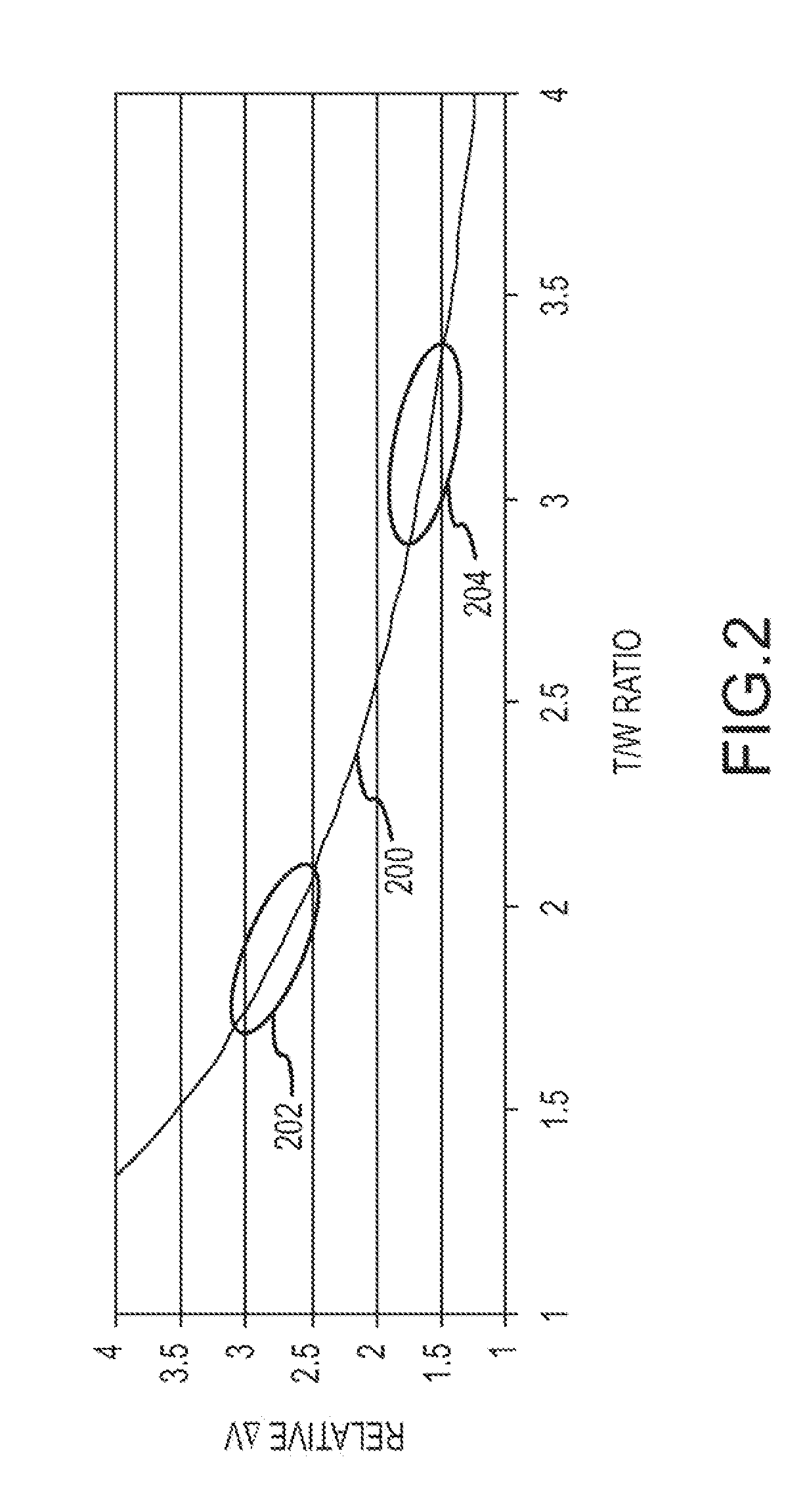Autonomous Space Flight System and Planetary Lander for Executing a Discrete Landing Sequence to Remove Unknown Navigation Error, Perform Hazard Avoidance and Relocate the Lander and Method
a space flight system and planetary lander technology, applied in the direction of instruments, instruments for comonautical navigation, distance measurement, etc., can solve the problems of increasing unknown navigation errors, large known guidance errors, etc., and achieve the effect of reducing the risk of landing, avoiding hazards, and detecting and avoiding hazards
- Summary
- Abstract
- Description
- Claims
- Application Information
AI Technical Summary
Benefits of technology
Problems solved by technology
Method used
Image
Examples
Embodiment Construction
[0031] The primary mission of a planetary lander and particularly the lander's propulsion and guidance system is to deliver the lander's payload softly and safely to the surface of the planet in the general vicinity of a specified landing site. Lander missions are very high profile, expensive and only occur once every few to several years. Consequently, NASA and the mission planners are understandably ‘risk averse’; they want to use known technology (hardware and software) to implement low risk (or at least perceived to be low risk) landing sequences during terminal descent to the planet's surface. Failure to deliver the payload e.g. sophisticated, delicate and expensive scientific instrumentation to the surface results in total mission failure.
[0032] Once the lander reaches its terminal landing altitude after parachute separation (in atmosphere, aka Mars) or solid rocket motor (SRM) separation (airless bodies, aka the Moon), the lander initiates its post-separation terminal descen...
PUM
 Login to View More
Login to View More Abstract
Description
Claims
Application Information
 Login to View More
Login to View More - R&D
- Intellectual Property
- Life Sciences
- Materials
- Tech Scout
- Unparalleled Data Quality
- Higher Quality Content
- 60% Fewer Hallucinations
Browse by: Latest US Patents, China's latest patents, Technical Efficacy Thesaurus, Application Domain, Technology Topic, Popular Technical Reports.
© 2025 PatSnap. All rights reserved.Legal|Privacy policy|Modern Slavery Act Transparency Statement|Sitemap|About US| Contact US: help@patsnap.com



